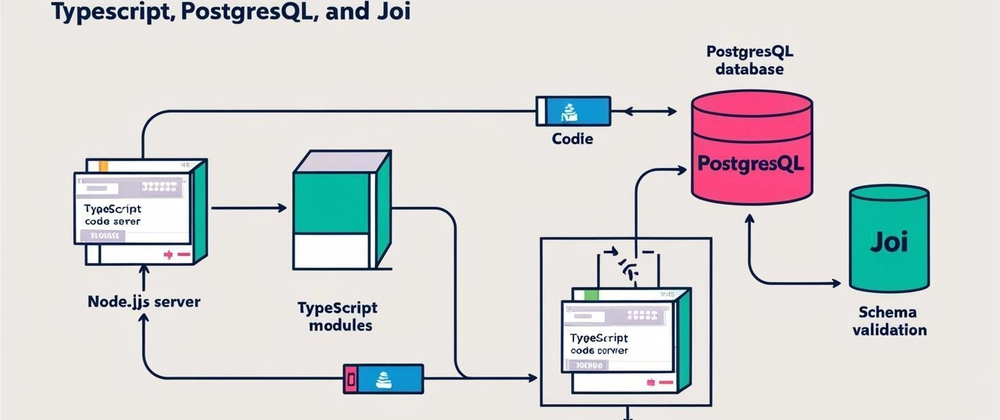In today's modern web development landscape, ensuring data integrity is paramount. Combining Node.js, TypeScript, PostgreSQL, and Joi offers a powerful solution to validate data before inserting or updating your database. In this blog, we will walk through setting up a Node.js project with TypeScript, installing Joi with TypeScript support, and integrating data validation for a seamless and error-free development experience.
Why Use TypeScript and Joi?
Using TypeScript in your Node.js project brings type safety and better code maintainability, catching errors at compile time rather than runtime. Coupled with Joi a robust schema description and data validation library you can validate your data before it reaches the PostgreSQL database. This ensures data integrity and prevents potential bugs that may occur due to invalid data.
Setting Up a Node.js Project with TypeScript
Before diving into data validation, let's set up a Node.js project with TypeScript. Follow these steps:
1. Initialize the Project
Create a new project directory and initialize npm:
mkdir node-ts-validation
cd node-ts-validation
npm init -y
2. Install TypeScript and Other Dependencies
npm install typescript ts-node @types/node --save-dev
3. Create the Project Structure
Create a folder named src where all your TypeScript code will reside:
mkdir src
This basic setup provides you with a solid foundation to build a robust Node.js application with TypeScript.
Installing Joi and Its TypeScript Types
Joi is a powerful tool for validating objects in JavaScript. To use Joi in a TypeScript project, follow these steps:
Install Joi
Run the following command to install Joi:
npm install joi
npm install --save-dev @types/joi # For TypeScript
Defining and Using Joi Schemas
With the setup complete, let's create a validation schema using Joi for a user model. This schema describes the structure and rules for user data before it interacts with your PostgreSQL database.
Create a User Model and Schema
In your src directory, create a file named user.ts and add the following code:
import Joi from 'joi';
// Define a Joi schema for the User model
export const userSchema = Joi.object({
id: Joi.number().integer().min(1),
username: Joi.string().alphanum().min(3).max(30).required(),
email: Joi.string().email().required(),
age: Joi.number().integer().min(0).max(120),
});
// Define a TypeScript interface for the User
export interface User {
id: number;
username: string;
email: string;
age?: number;
}
// Function to validate a user object against the schema
export const validateUser = (user: User): User => {
const { error, value } = userSchema.validate(user);
if (error) {
throw new Error(`Validation error: ${error.message}`);
}
return value;
};
This code snippet demonstrates the creation of a Joi schema for a simple user model, as well as a function to validate user data. The use of TypeScript interfaces alongside Joi validation creates a robust system where both compile-time and runtime validations work together to maintain data integrity.
For DB connection, I recommended below blog Please checkout!
Integrate the validation process into the data access layer, before performing database operations.
// Example using a hypothetical database client
const createUser = async (user: User) => {
const validatedUser = validateUser(user);
return await pool.query('INSERT INTO users (username, email, age) VALUES ($1, $2, $3)', [validatedUser.username, validatedUser.email, validatedUser.age]);
};
This example demonstrates how to integrate Joi-based validation with a PostgreSQL query. Before executing the query, the user data is validated, ensuring that only valid and correctly formatted data is stored in the database.
Conclusion
By combining Node.js, TypeScript, PostgreSQL, and Joi, you can build robust applications with strong data validation, reducing the risk of errors and ensuring data integrity. This blog has walked you through setting up a Node.js project with TypeScript, installing and configuring Joi, and integrating a data validation workflow with PostgreSQL.
Implementing these practices not only helps maintain high standards in your application's architecture but also provides a more seamless and reliable user experience. Happy coding!
Feel free to share your thoughts and ask any questions in the comments below!



 javascript.plainenglish.io
javascript.plainenglish.io



Top comments (0)